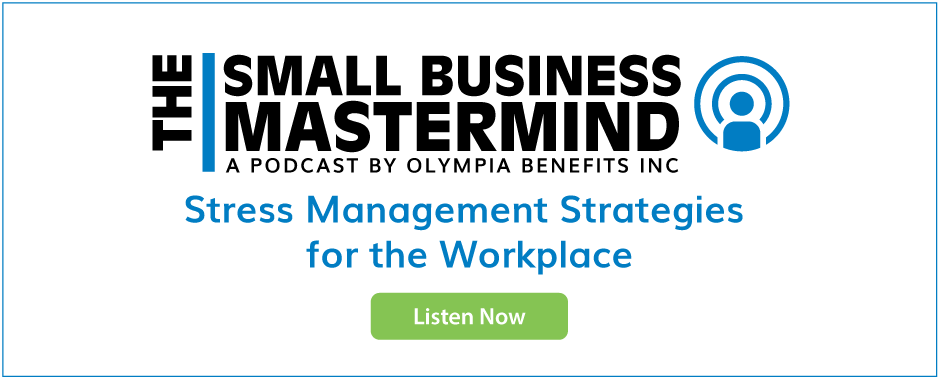Stress is a broad term, often with negative connotations. In fact, not all stress is bad – that stress, or adrenaline rush, that motivates you to meet a deadline or run from a bear is good stress, and can be life-saving. In the short term, stress that helps meet that deadline can be beneficial, but imagine if that feeling of running from a bear never goes away...
Chronic stress is the ongoing feeling of fight, flight or freeze. It’s not going to help you relax, make good decisions or even digest your lunch. Today’s stress doesn’t usually come from running from a bear, but from a variety of sources - from work, to finance, family, and the pace of society as a whole. Left unmanaged, chronic stress will take its toll on the mind and body, inevitably having an impact on one’s ability to do their best work.
In Canada:
Traditional workplace culture often preaches that we reserve well-being for time off, yet the majority of our clients (> 70%) report experiencing some form of physical or mental strain during the workday and we know that our clients are not alone.
At inHabit, we believe that work doesn’t have to be a pain in the neck... or at least, we believe that the work environment does not have to contribute to the other overarching stressors of work and life.
We consistently see manifestations of stress in the workplace such as back pain, neck pain, eye-strain, sitting for long hours, slumps in the afternoon, not taking breaks, and individuals ‘bringing work home’ or struggling to get a good night’s sleep. How we manage these cumulative effects of stress has a profound impact on our productivity, decision making, and as small business owners... our bottom-line.
Let’s face it - simply installing a standing desk doesn’t guarantee that aches, pains, and stress will go away, and not everyone is motivated towards fitness, nutrition, or investing time in their workday towards well-being. However, when it comes to feeling stress and discomfort, everyone just wants the same thing… to just feel better.
The good news is that small changes to your work habits and your work habitat can help manage, prevent, or eliminate sources of stress; leaving your employees with a more desirable workplace and you, the business owner, with stronger retention and protection of your bottom line.
When considering how to improve the health of a workplace, we recommend considering signs of stress in the work environment, such as:
- Existing accounts of aches and pains? If you are uncertain, take a quick survey or consider if each workstation has been set up ergonomically for each user.
- What is the average amount of sedentary time each day for each team member?
- What type of break periods do employees engage in (if any)?
- What is the general attitude or dynamic within the team? Is it positive or negative? Are people reactive and overworked? Is there gossip or collaboration?
- What is the time of year employees take the most sick days?
- Is there a noticeable slump in the afternoon? Are employees experiencing headaches or eye-strain?
So, what’s an employer to do about it? There are some simple solutions:
- Educate your team on basic ergonomic awareness in their workspace.
- Encourage team members to practice self-care in the form of short breaks once or twice an hour or even during work related tasks. These might include using self-massage tools, listening to music, practicing deep breathing exercises, resting their eyes, or getting fresh air. Check out these quick tutorials to guide your micro-break.
- Mix it up by including some basic stretching, breathing, or walking before and after meetings. Consider ways to engage with your team outdoors, either on-site, or by gathering outdoors.
- Implement eye-strain preventing screen apps like Flux to reduce harsh white and blue light emitted from monitors. Also, finding ways to let more natural light in, or turning off bright overheads for short periods can help regulate energy and reduce eye strain.
- Investigate air quality solutions such as purifiers or indoor plants identified by NASA’s Clean Air Study.
- Engage an ergonomic wellness expert to assess and design a healthy workspace, or to host a training session on healthy work habits for your team. Having a professional to consult with for the long-term can provide your team with an advocate in identifying and troubleshooting stress and well-being issues before they have a negative impact on your bottom line.
Tim Kessler is an ergonomic wellness specialist at inHabit Workplace Wellness. He is the featured guest on the second episode of The Small Business Mastermind podcast presented by Olympia Benefits airing on January 8, 2019.

Related Reading
The Best HSA Eligible Expenses for Stress Management
Stress Management for the Workplace [Transcript]
Written for: Olympia Benefits